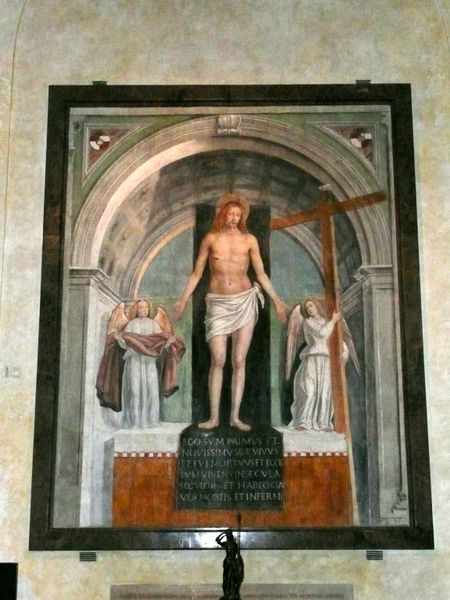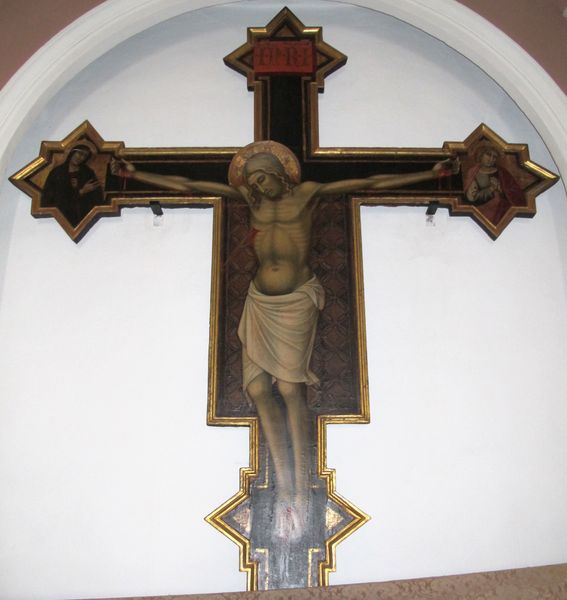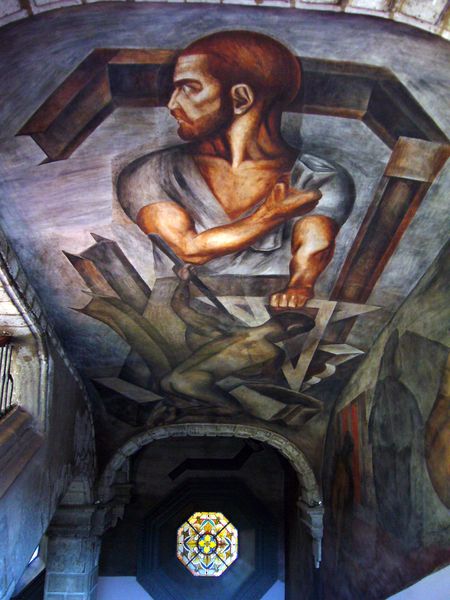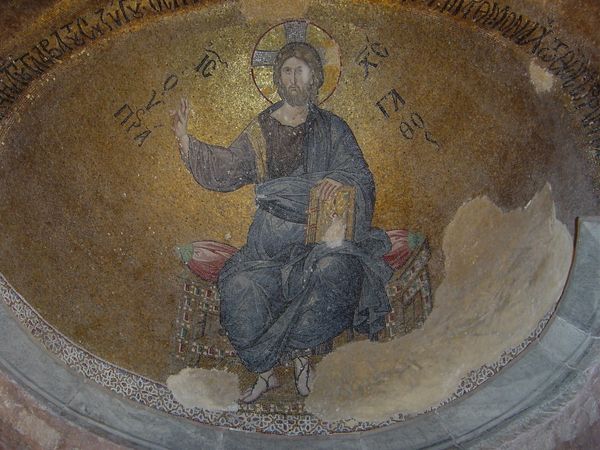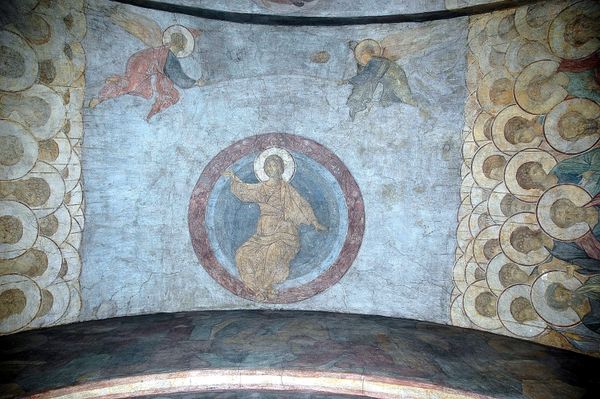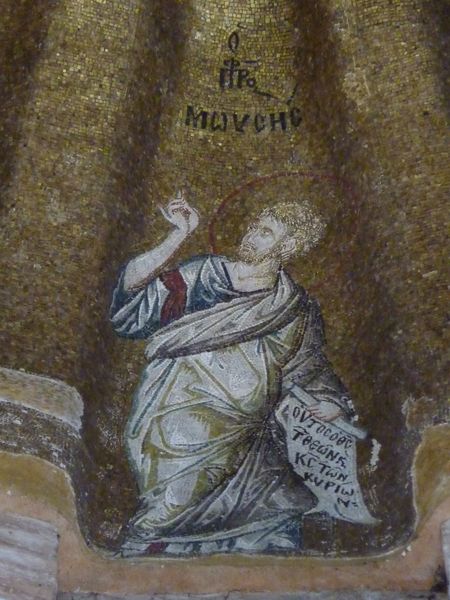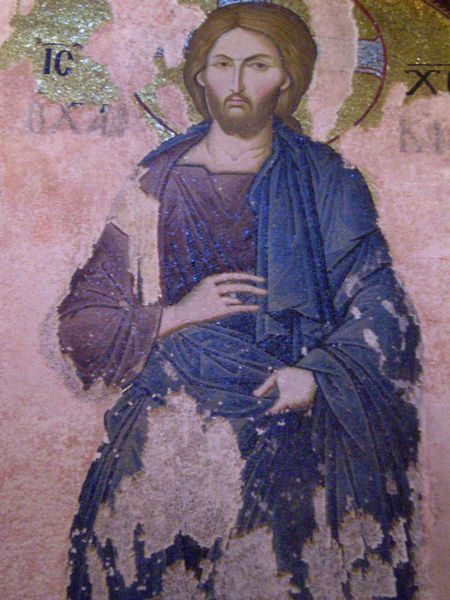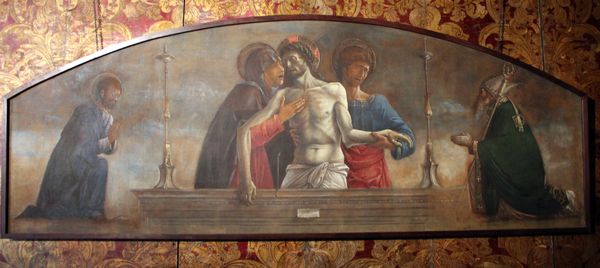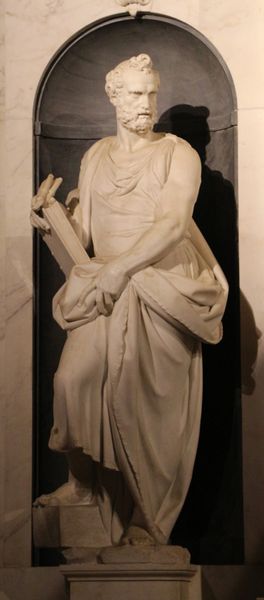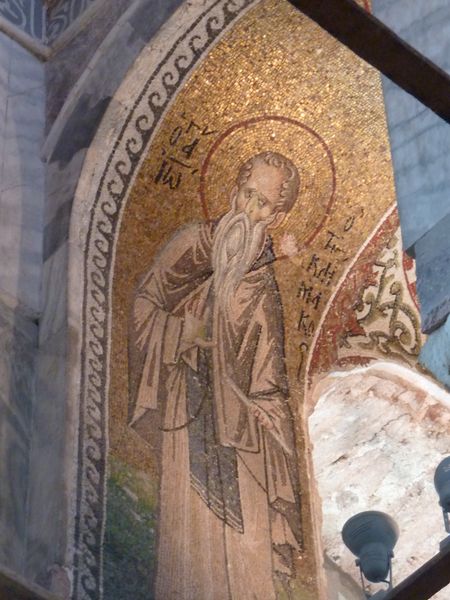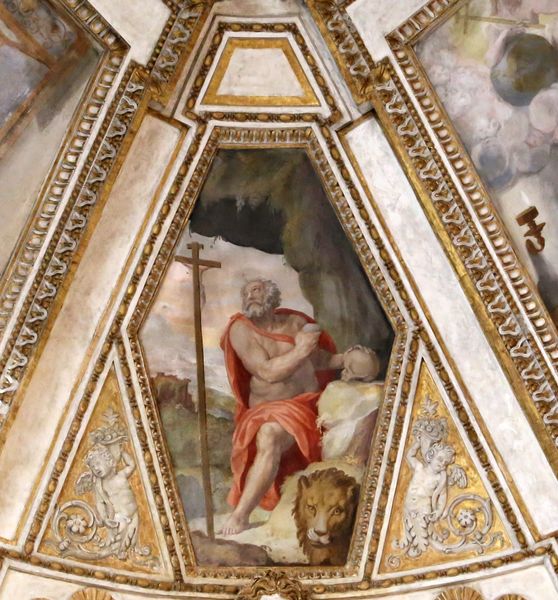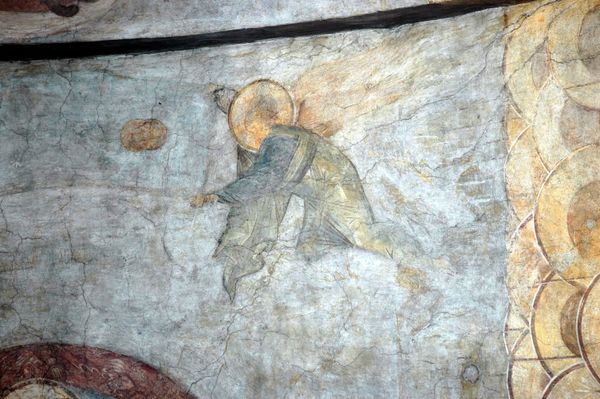
painting, fresco
#
painting
#
painted
#
figuration
#
fresco
#
oil painting
#
underpainting
#
history-painting
#
italian-renaissance
Copyright: Public domain
Ambrogio Bergognone made this fresco, titled "Jesus beneath the winepress," around the turn of the 16th century. Bergognone’s work is characterized by the delicate application of pigment on a prepared plaster surface. Fresco, a technique demanding precision and speed, sees the artist applying water-based paint to wet plaster, which then chemically binds the paint to the wall as it dries. The result is a vibrant and durable surface that has lasted centuries. The materiality of fresco invites consideration of the craft involved. It's a physical process, requiring skilled labor to prepare the wall, mix the pigments, and apply the paint. The artist's hand is directly present in the finished work, in every brushstroke and color choice. The social context of this labor is critical. Fresco painting was often a collaborative effort, with master artists overseeing workshops of assistants. Understanding the materiality and making of Bergognone's fresco allows us to appreciate the skill and labor involved in its creation.
Comments
No comments
Be the first to comment and join the conversation on the ultimate creative platform.
